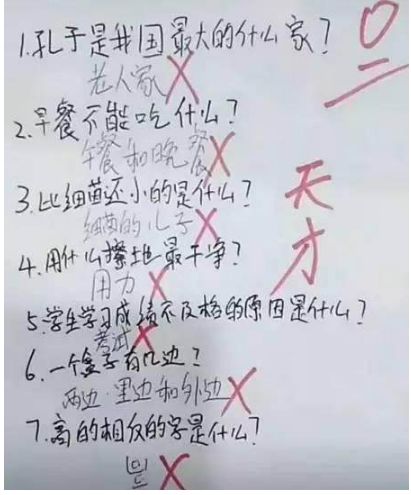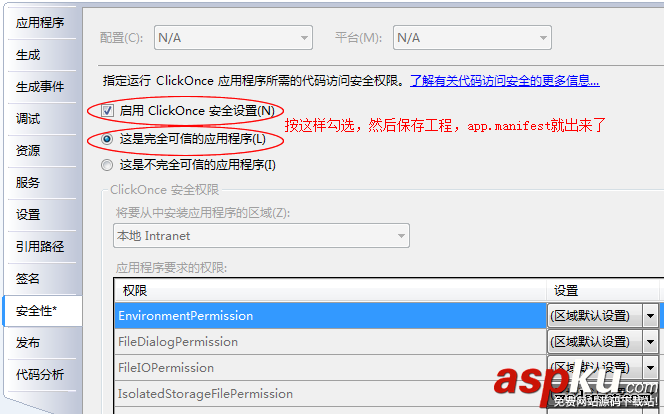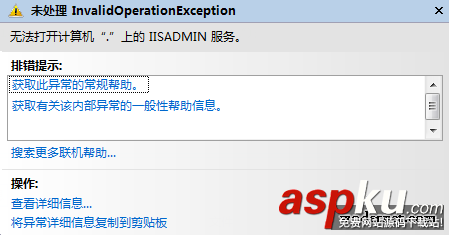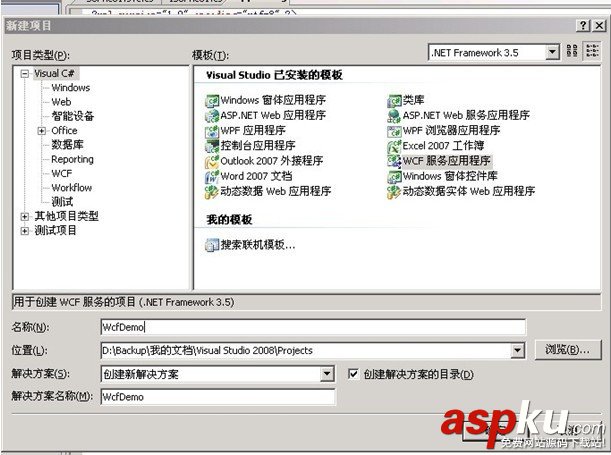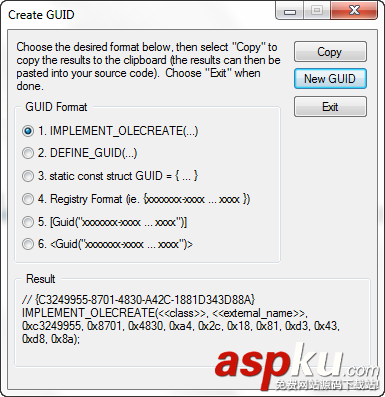有一段時(shí)間,正則表達(dá)式學(xué)習(xí)很火熱很潮流,當(dāng)時(shí)在腳本之間平臺(tái)一天就能看到好幾個(gè)正則表達(dá)式的帖子,那段時(shí)間借助論壇以及Wrox Press出版的《C#字符串和正則表達(dá)式參考手冊(cè)》學(xué)習(xí)了一些基礎(chǔ)的知識(shí),同時(shí)也為我在CSDN大概賺了1000分,今天想起來(lái),去找《C#字符串和正則表達(dá)式參考手冊(cè)》時(shí),已經(jīng)不知所蹤了。現(xiàn)在用到正則的時(shí)候也比較少,把以前的筆記等整理一下,以志不忘。
(1)“@”符號(hào)
符下兩ows表研究室的火熱,當(dāng)晨在“@”雖然并非C#正則表達(dá)式的“成員”,但是它經(jīng)常與C#正則表達(dá)式出雙入對(duì)。“@”表示,跟在它后面的字符串是個(gè)“逐字字符串”,不是很好理解,舉個(gè)例子,以下兩個(gè)聲明是等效的:
string x="D://My Huang//My Doc";string y = @"D:/My Huang/My Doc";
事實(shí)上,如果按如下聲明,C#將會(huì)報(bào)錯(cuò),因?yàn)?ldquo;/”在C#中用于實(shí)現(xiàn)轉(zhuǎn)義,如“/n”換行:
string x = "D:/My Huang/My Doc";
(2)基本的語(yǔ)法字符。
/d 0-9的數(shù)字
/D /d的補(bǔ)集(以所以字符為全集,下同),即所有非數(shù)字的字符
/w 單詞字符,指大小寫(xiě)字母、0-9的數(shù)字、下劃線
/W /w的補(bǔ)集
/s 空白字符,包括換行符/n、回車(chē)符/r、制表符/t、垂直制表符/v、換頁(yè)符/f
/S /s的補(bǔ)集
. 除換行符/n外的任意字符
[…] 匹配[]內(nèi)所列出的所有字符
[^…] 匹配非[]內(nèi)所列出的字符
下面提供一些簡(jiǎn)單的示例:
string i = "/n"; string m = ""; Regex r = new Regex(@"/D"); //同Regex r = new Regex("//D"); //r.IsMatch(i)結(jié)果:true //r.IsMatch(m)結(jié)果:false string i = "%"; string m = ""; Regex r = new Regex("[a-z-]"); //匹配小寫(xiě)字母或數(shù)字字符 //r.IsMatch(i)結(jié)果:false //r.IsMatch(m)結(jié)果:true (3)定位字符
“定位字符”所代表的是一個(gè)虛的字符,它代表一個(gè)位置,你也可以直觀地認(rèn)為“定位字符”所代表的是某個(gè)字符與字符間的那個(gè)微小間隙。
^ 表示其后的字符必須位于字符串的開(kāi)始處
$ 表示其前面的字符必須位于字符串的結(jié)束處
/b 匹配一個(gè)單詞的邊界
/B 匹配一個(gè)非單詞的邊界
另外,還包括:/A 前面的字符必須位于字符處的開(kāi)始處,/z 前面的字符必須位于字符串的結(jié)束處,/Z 前面的字符必須位于字符串的結(jié)束處,或者位于換行符前
下面提供一些簡(jiǎn)單的示例:
string i = "Live for nothing,die for something"; Regex r = new Regex("^Live for nothing,die for something$"); //r.IsMatch(i) true Regex r = new Regex("^Live for nothing,die for some$"); //r.IsMatch(i) false Regex r = new Regex("^Live for nothing,die for some"); //r.IsMatch(i) true string i = @"Live for nothing, die for something";//多行 Regex r = new Regex("^Live for nothing,die for something$"); Console.WriteLine("r match count:" + r.Matches(i).Count);// Regex r = new Regex("^Live for nothing,die for something$", RegexOptions.Multiline); Console.WriteLine("r match count:" + r.Matches(i).Count);// Regex r = new Regex("^Live for nothing,/r/ndie for something$"); Console.WriteLine("r match count:" + r.Matches(i).Count);// Regex r = new Regex("^Live for nothing,$"); Console.WriteLine("r match count:" + r.Matches(i).Count);// Regex r = new Regex("^Live for nothing,$", RegexOptions.Multiline); Console.WriteLine("r match count:" + r.Matches(i).Count);// Regex r = new Regex("^Live for nothing,/r/n$"); Console.WriteLine("r match count:" + r.Matches(i).Count);// Regex r = new Regex("^Live for nothing,/r/n$", RegexOptions.Multiline); Console.WriteLine("r match count:" + r.Matches(i).Count);// Regex r = new Regex("^Live for nothing,/r$"); Console.WriteLine("r match count:" + r.Matches(i).Count);// Regex r = new Regex("^Live for nothing,/r$", RegexOptions.Multiline); Console.WriteLine("r match count:" + r.Matches(i).Count);// Regex r = new Regex("^die for something$"); Console.WriteLine("r match count:" + r.Matches(i).Count);// Regex r = new Regex("^die for something$", RegexOptions.Multiline); Console.WriteLine("r match count:" + r.Matches(i).Count);// Regex r = new Regex("^"); Console.WriteLine("r match count:" + r.Matches(i).Count);// Regex r = new Regex("$"); Console.WriteLine("r match count:" + r.Matches(i).Count);// Regex r = new Regex("^", RegexOptions.Multiline); Console.WriteLine("r match count:" + r.Matches(i).Count);// Regex r = new Regex("$", RegexOptions.Multiline); Console.WriteLine("r match count:" + r.Matches(i).Count);// Regex r = new Regex("^Live for nothing,/r$/n^die for something$", RegexOptions.Multiline); Console.WriteLine("r match count:" + r.Matches(i).Count);// //對(duì)于一個(gè)多行字符串,在設(shè)置了Multiline選項(xiàng)之后,^和$將出現(xiàn)多次匹配。 string i = "Live for nothing,die for something"; string m = "Live for nothing,die for some thing"; Regex r = new Regex(@"/bthing/b"); Console.WriteLine("r match count:" + r.Matches(i).Count);// Regex r = new Regex(@"thing/b"); Console.WriteLine("r match count:" + r.Matches(i).Count);// Regex r = new Regex(@"/bthing/b"); Console.WriteLine("r match count:" + r.Matches(m).Count);// Regex r = new Regex(@"/bfor something/b"); Console.WriteLine("r match count:" + r.Matches(i).Count);// ///b通常用于約束一個(gè)完整的單詞 (4)重復(fù)描述字符
“重復(fù)描述字符”是體現(xiàn)C#正則表達(dá)式“很好很強(qiáng)大”的地方之一:
{n} 匹配前面的字符n次
{n,} 匹配前面的字符n次或多于n次
{n,m} 匹配前面的字符n到m次
? 匹配前面的字符0或1次
+ 匹配前面的字符1次或多于1次
* 匹配前面的字符0次或式于0次
以下提供一些簡(jiǎn)單的示例:
string x = ""; string y = "+"; string z = ","; string a = ""; string b="-"; string c = ""; Regex r = new Regex(@"^/+?[-],?/d{}$"); Console.WriteLine("x match count:" + r.Matches(x).Count);// Console.WriteLine("y match count:" + r.Matches(y).Count);// Console.WriteLine("z match count:" + r.Matches(z).Count);// Console.WriteLine("a match count:" + r.Matches(a).Count);// Console.WriteLine("b match count:" + r.Matches(b).Count);// Console.WriteLine("c match count:" + r.Matches(c).Count);// //匹配到的整數(shù)。 //http://www.cnblogs.com/sosoft/ (5)擇一匹配
C#正則表達(dá)式中的 (|) 符號(hào)似乎沒(méi)有一個(gè)專(zhuān)門(mén)的稱(chēng)謂,姑且稱(chēng)之為“擇一匹配”吧。事實(shí)上,像[a-z]也是一種擇一匹配,只不過(guò)它只能匹配單個(gè)字符,而(|)則提供了更大的范圍,(ab|xy)表示匹配ab或匹配xy。注意“|”與“()”在此是一個(gè)整體。下面提供一些簡(jiǎn)單的示例:
string x = ""; string y = "."; string z = ""; string a = "."; string b = "."; string c = "."; string d = "."; string e = "."; Regex r = new Regex(@"^/+?(((.+)*)|([-]?[-])(/./d+)*)$"); Console.WriteLine("x match count:" + r.Matches(x).Count);// Console.WriteLine("y match count:" + r.Matches(y).Count);// Console.WriteLine("z match count:" + r.Matches(z).Count);// Console.WriteLine("a match count:" + r.Matches(a).Count);// Console.WriteLine("b match count:" + r.Matches(b).Count);// Console.WriteLine("c match count:" + r.Matches(c).Count);// Console.WriteLine("d match count:" + r.Matches(d).Count);// Console.WriteLine("e match count:" + r.Matches(e).Count);// //匹配到的數(shù) 最外層的括號(hào)內(nèi)包含兩部分“(100(.0+)*)”,“([1-9]?[0-9])(/./d+)*”,這兩部分是“OR”的關(guān)系,即正則表達(dá)式引擎會(huì)先嘗試匹配100,如果失敗,則嘗試匹配后一個(gè)表達(dá)式(表示[0,100)范圍中的數(shù)字)。
(6)特殊字符的匹配
下面提供一些簡(jiǎn)單的示例:
(7)組與非捕獲組
以下提供一些簡(jiǎn)單的示例:
string x = "Live for nothing,die for something"; string y = "Live for nothing,die for somebody"; Regex r = new Regex(@"^Live ([a-z]{}) no([a-z]{}),die / some/$"); Console.WriteLine("x match count:" + r.Matches(x).Count);// Console.WriteLine("y match count:" + r.Matches(y).Count);// //正則表達(dá)式引擎會(huì)記憶“()”中匹配到的內(nèi)容,作為一個(gè)“組”,并且可以通過(guò)索引的方式進(jìn)行引用 表達(dá)式中的“/”,用于反向引用表達(dá)式中出現(xiàn)的第一個(gè)組,即粗體標(biāo)識(shí)的第一個(gè)括號(hào)內(nèi)容,“/”則依此類(lèi)推。
string x = "Live for nothing,die for something"; Regex r = new Regex(@"^Live for no([a-z]{}),die for some/$"); if (r.IsMatch(x)) { Console.WriteLine("group value:" + r.Match(x).Groups[].Value);//輸出:thing } //獲取組中的內(nèi)容。注意,此處是Groups[],因?yàn)镚roups[]是整個(gè)匹配的字符串,即整個(gè)變量x的內(nèi)容。 // http://www.cnblogs.com/sosoft/ string x = "Live for nothing,die for something"; Regex r = new Regex(@"^Live for no(?<g>[a-z]{}),die for some/$"); if (r.IsMatch(x)) { Console.WriteLine("group value:" + r.Match(x).Groups["g"].Value);//輸出:thing } //可根據(jù)組名進(jìn)行索引。使用以下格式為標(biāo)識(shí)一個(gè)組的名稱(chēng)(?<groupname>…)。 string x = "Live for nothing nothing"; Regex r = new Regex(@"([a-z]+) /"); if (r.IsMatch(x)) { x = r.Replace(x, "$"); Console.WriteLine("var x:" + x);//輸出:Live for nothing } //刪除原字符串中重復(fù)出現(xiàn)的“nothing”。在表達(dá)式之外,使用“$”來(lái)引用第一個(gè)組,下面則是通過(guò)組名來(lái)引用: string x = "Live for nothing nothing"; Regex r = new Regex(@"(?<g>[a-z]+) /"); if (r.IsMatch(x)) { x = r.Replace(x, "${g}"); Console.WriteLine("var x:" + x);//輸出:Live for nothing } string x = "Live for nothing"; Regex r = new Regex(@"^Live for no(?:[a-z]{})$"); if (r.IsMatch(x)) { Console.WriteLine("group value:" + r.Match(x).Groups[].Value);//輸出:(空) }//在組前加上“?:”表示這是個(gè)“非捕獲組”,即引擎將不保存該組的內(nèi)容 (8)貪婪與非貪婪
正則表達(dá)式的引擎是貪婪,只要模式允許,它將匹配盡可能多的字符。通過(guò)在“重復(fù)描述字符”(*,+)后面添加“?”,可以將匹配模式改成非貪婪。請(qǐng)看以下示例:
string x = "Live for nothing,die for something"; Regex r = new Regex(@".*thing"); if (r.IsMatch(x)) { Console.WriteLine("match:" + r.Match(x).Value);//輸出:Live for nothing,die for something } Regex r = new Regex(@".*?thing"); if (r.IsMatch(x)) { Console.WriteLine("match:" + r.Match(x).Value);//輸出:Live for nothing } (9)回溯與非回溯
使用“(?>…)”方式進(jìn)行非回溯聲明。由于正則表達(dá)式引擎的貪婪特性,導(dǎo)致它在某些情況下,將進(jìn)行回溯以獲得匹配,請(qǐng)看下面的示例:
string x = "Live for nothing,die for something"; Regex r = new Regex(@".*thing,"); if (r.IsMatch(x)) { Console.WriteLine("match:" + r.Match(x).Value);//輸出:Live for nothing, } Regex r = new Regex(@"(?>.*)thing,"); if (r.IsMatch(x))//不匹配 { Console.WriteLine("match:" + r.Match(x).Value); } //在r中,“.*”由于其貪婪特性,將一直匹配到字符串的最后,隨后匹配“thing”,但在匹配“,”時(shí)失敗,此時(shí)引擎將回溯,并在“thing,”處匹配成功 //在r中,由于強(qiáng)制非回溯,所以整個(gè)表達(dá)式匹配失敗。
(10)正向預(yù)搜索、反向預(yù)搜索
正向預(yù)搜索聲明格式:正聲明 “(?=…)”,負(fù)聲明 “(?!...)” ,聲明本身不作為最終匹配結(jié)果的一部分,請(qǐng)看下面的示例:
string x = " used free"; Regex r = new Regex(@"/d{}(?= used)"); if (r.Matches(x).Count==) { Console.WriteLine("r match:" + r.Match(x).Value);//輸出: } Regex r = new Regex(@"/d{}(?! used)"); if (r.Matches(x).Count==) { Console.WriteLine("r match:" + r.Match(x).Value); //輸出: } //r中的正聲明表示必須保證在四位數(shù)字的后面必須緊跟著“ used”,r2中的負(fù)聲明表示四位數(shù)字之后不能跟有“ used” 反向預(yù)搜索聲明格式:正聲明“(?<=)”,負(fù)聲明“(?<!)”,聲明本身不作為最終匹配結(jié)果的一部分,請(qǐng)看下面的示例:
string x = "used: free:"; Regex r = new Regex(@"(?<=used:)/d{}"); if (r.Matches(x).Count==) { Console.WriteLine("r match:" + r.Match(x).Value);//輸出: } Regex r = new Regex(@"(?<!used:)/d{}"); if (r.Matches(x).Count==) { Console.WriteLine("r match:" + r.Match(x).Value);//輸出: } //r中的反向正聲明表示在4位數(shù)字之前必須緊跟著“used:”,r2中的反向負(fù)聲明表示在4位數(shù)字之前必須緊跟著除“used:”之外的字符串 (11)十六進(jìn)制字符范圍
正則表達(dá)式中,可以使用 "/xXX" 和 "/uXXXX" 表示一個(gè)字符("X" 表示一個(gè)十六進(jìn)制數(shù))形式字符范圍:
/xXX 編號(hào)在 0到255 范圍的字符,比如:空格可以使用 "/x20" 表示。
/uXXXX 任何字符可以使用 "/u" 再加上其編號(hào)的4位十六進(jìn)制數(shù)表示,比如:漢字可以使用“[/u4e00-/u9fa5]”表示。
(12)對(duì)[0,100]的比較完備的匹配
下面是一個(gè)比較綜合的示例,對(duì)于匹配[0,100],需要特殊考慮的地方包括
*00合法,00.合法,00.00合法,001.100合法
*空字符串不合法,僅小數(shù)點(diǎn)不合法,大于100不合法
*數(shù)值是可帶后綴的,如“1.07f”表示該值為一個(gè)float類(lèi)型(未考慮)
Regex r = new Regex(@"^/+?*(?:(/.*)?|(/d{,}(?=/./d)|/d{,}(?=($|/.$)))(/./d*)?)$"); string x = ""; while (true) { x = Console.ReadLine(); if (x != "exit") { if (r.IsMatch(x)) { Console.WriteLine(x + " succeed!"); } else { Console.WriteLine(x + " failed!"); } } else { break; } } (13)精確匹配有時(shí)候是困難的
有些需求要做到精確匹配比較困難,例如:日期、Url、Email地址等,其中一些你甚至需要研究一些專(zhuān)門(mén)的文檔寫(xiě)出精確完備的表達(dá)式,對(duì)于這種情況,只能退而求其次,保證比較精確的匹配。例如對(duì)于日期,可以基于應(yīng)用系統(tǒng)的實(shí)際情況考慮一段較短的時(shí)間,或者對(duì)于像Email的匹配,可以只考慮最常見(jiàn)的形式。
以上內(nèi)容是小編給大家介紹的C#正則表達(dá)式,希望大家喜歡。同時(shí)感謝大家一直以來(lái)對(duì)VEVB武林網(wǎng)網(wǎng)站的支持,祝大家元旦快樂(lè)。









